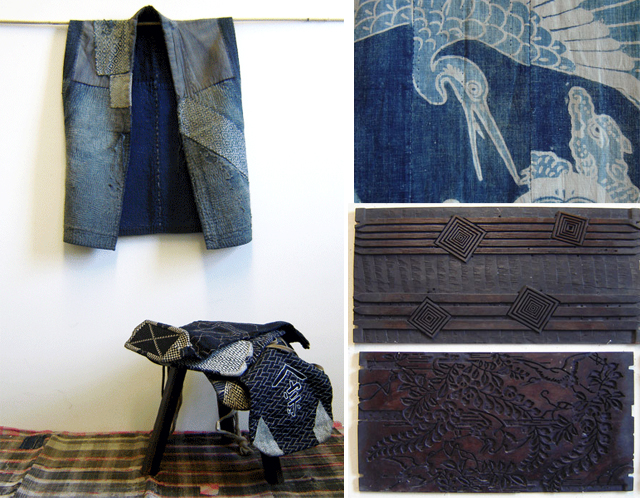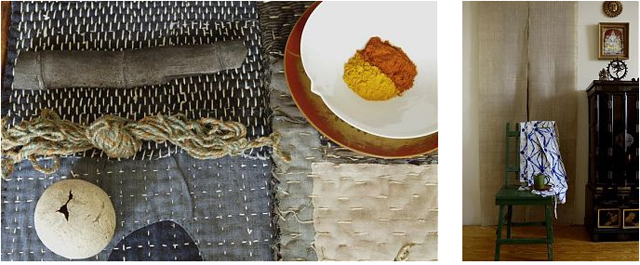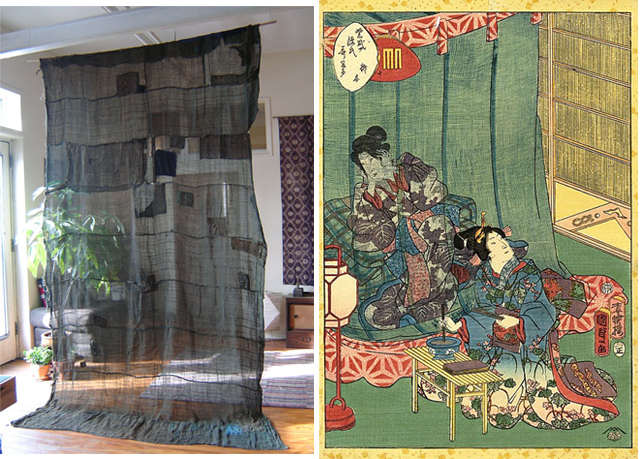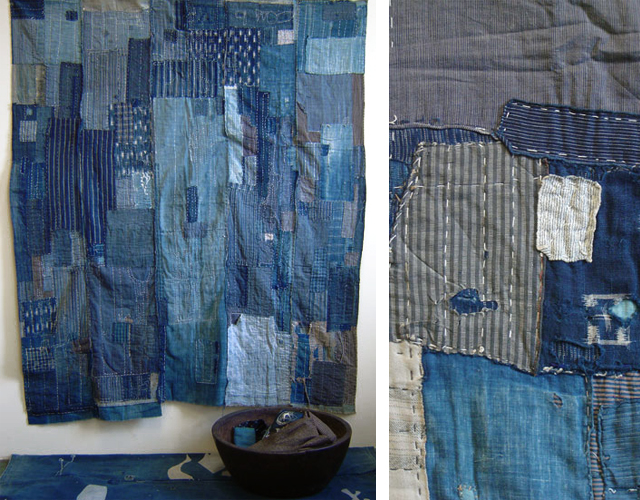 Sometimes, the connection one feels towards a culture foreign to one’s own is uncanny. Especially if you’ve never visited the country, certainly don’t understand the language, and are not especially knowledgeable about its history and culture. Yet, the connection and appreciation are there — deeply rooted.
Sometimes, the connection one feels towards a culture foreign to one’s own is uncanny. Especially if you’ve never visited the country, certainly don’t understand the language, and are not especially knowledgeable about its history and culture. Yet, the connection and appreciation are there — deeply rooted.
That is exactly how I feel about Ancient Japan’s culture and aesthetic. Among others, that is the reason I quickly connected with Stephen Sczcepanek, of Sri Threads. His passion for Japanese textiles (and his infinite knowledge of the history and technique of each kimono, cloth and fabric) have lead him to open his own showroom in Greenpoint, Brooklyn. Unlike me, he often travels to Japan (and I suspect he even speaks some Japanese), where he procures some of the most precious ancient textiles.
 Through his showroom and website, he showcases and sells unique pieces that immediately transport your imagination to a Japan long before its encounter with the Western world. In a past post I spoke a bit about Wabi-Sabi, which could be described in a nutshell as the beauty of things imperfect, impermanent and incomplete. Sri Threads is the epitome of Wabi-Sabi, and their blog is a fountain of knowledge on “indigo-dyed cotton utilitarian fabrics and boro — or patched and mended — textiles of old Japan.”
Through his showroom and website, he showcases and sells unique pieces that immediately transport your imagination to a Japan long before its encounter with the Western world. In a past post I spoke a bit about Wabi-Sabi, which could be described in a nutshell as the beauty of things imperfect, impermanent and incomplete. Sri Threads is the epitome of Wabi-Sabi, and their blog is a fountain of knowledge on “indigo-dyed cotton utilitarian fabrics and boro — or patched and mended — textiles of old Japan.”
 What I think makes something so markedly non-Mediterranean BiniChic is the subtle beauty that lies in the worn-out, stitched-up and story-filled textiles. The tone-on-tone natural indigo pieces are stunning all in themselves, and when they are mixed and juxtaposed with the intricately stitched and carefully painted fabrics, they become breathtaking. As the saying “if walls could speak” goes, these fabrics carry with them centuries of legends and traditions we will never really know — and which we can only imagine.
What I think makes something so markedly non-Mediterranean BiniChic is the subtle beauty that lies in the worn-out, stitched-up and story-filled textiles. The tone-on-tone natural indigo pieces are stunning all in themselves, and when they are mixed and juxtaposed with the intricately stitched and carefully painted fabrics, they become breathtaking. As the saying “if walls could speak” goes, these fabrics carry with them centuries of legends and traditions we will never really know — and which we can only imagine.
Some day, I hope to accompany Stephen on one of his purchasing trips — although he doesn’t know this yet — and discover by his side the treasures that remain to be uncovered in the world of Japanese ancient textiles.





Beautiful images! Thanks for posting!